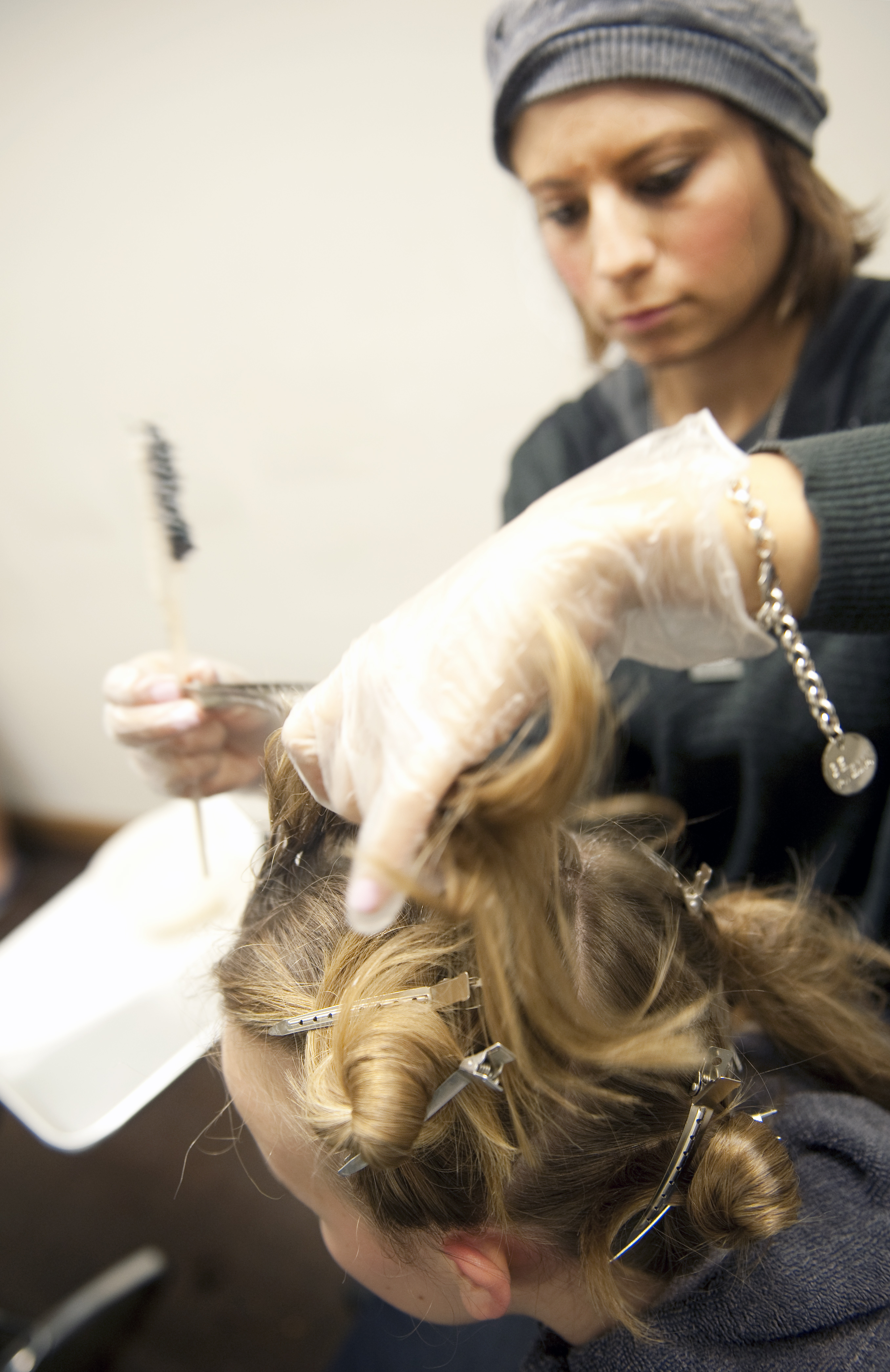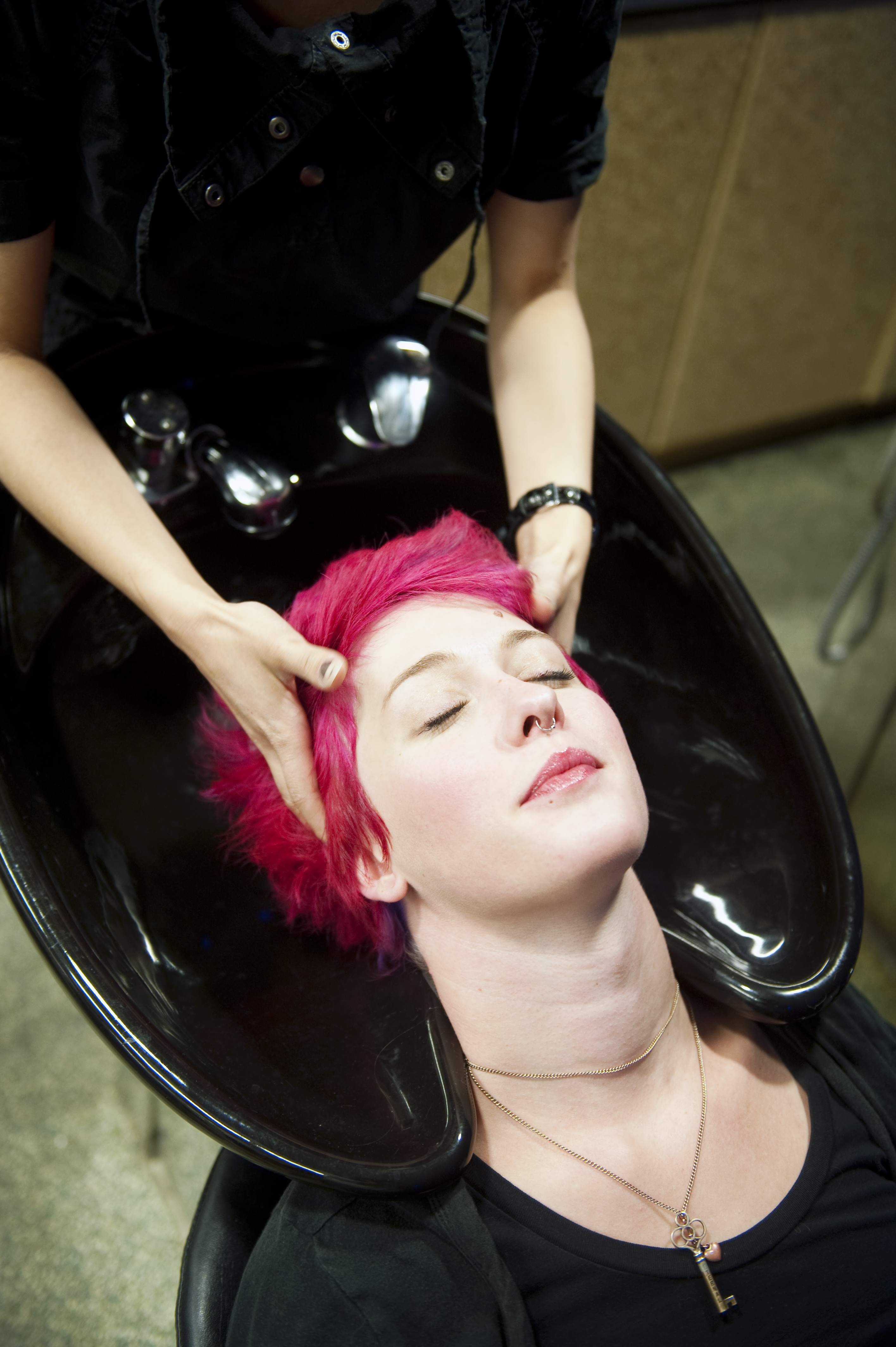
Aveda instructor Sandra Zaki dyes the hair of Madison Ambos, a beauty school student at the Aveda Institute.
Bald people can’t do it, but even kimono-wearing old ladies in Japan have jumped on the hair color bandwagon. From the streets of Tokyo, where women decorate their grays with streaks of purple and green, to the passersby on Bruin Walk, dyed hair can be seen just about anywhere.
Some UCLA students said that they view color experimentation with hair dye and bleach as an enjoyable creative outlet ““ worth the money and potential damage, at least until the real world of professionalism hits.
“I think everyone looks better with their natural hair color, but it’s fun to experiment and take risks. You can always dye it back,” said Jessica Ziskind, fourth-year art history student and natural brunette.
Ziskind was scheduled for a coloring appointment the day of the interview and had decided to go monochrome with a wine red job to complement her pale complexion.
According to Martha Ramos, color coach at the Aveda Institute in Westwood, clients often request darker colors, ranging from rich browns to experimental violets, in the fall and winter.
Although hair-coloring is less permanent than a bad haircut, some insist that the process causes serious damage.
According to Ramos, the process of dyeing hair requires calculated amounts of hydrogen peroxide and ammonia. Different levels of each chemical are applied depending on whether clients want to darken or lighten their hair color.
Bleaching, which is potentially more damaging, involves heavy doses of hydrogen peroxide and bleach that strip the hair of its natural melanin pigment.
In addition to the initial treatment, clients who wish to maintain their color are encouraged to dye or bleach every eight to 10 weeks, to trim their split ends upon every salon visit and to use special products to keep the integrity of the hair.
“It’s definitely frying my hair,” Ziskind said. “But I’m the kind of person who needs a constant change. I just get bored.”
The popularity of the trend may lie in the fact that a person’s hair can be a certain way one day and another way the next.
“I’ve noticed a lot of split ends, and I have to trim a lot, but it’s definitely worth it,” said Lenika Cruz, a third-year English student who dyes her hair once every month or month and a half.
Her current color is a warm brown with red undertones though her natural hair color is a dark brown.
Cruz uses do-it-yourself coloring kits to save money instead of going to the salon and avoids over-processing by dyeing only the roots of her hair when they grow out.
According to Ramos, out-of-the-box products contain high percentages of ammonia, which can be more harmful than natural products offered at salons.
“Don’t do box color,” said Madison Ambos, a beauty school student at the Aveda Institute, as she sat and got her own hair darkened by an instructor.
Laura Richardson, a law student and natural blonde, has been dyeing her hair since age 7.
Her tresses have seen the likes of brown, platinum blond and fire engine red ““ the list goes on ““ but as she interns at law firms and applies for jobs, she feels that her window of opportunity is closing.
Still, Richardson’s current style is an electric blue.
“I was at a hair salon buying shampoo when I saw the box. I’d always wanted to do it, and I felt like I was running out of chances,” she said.
